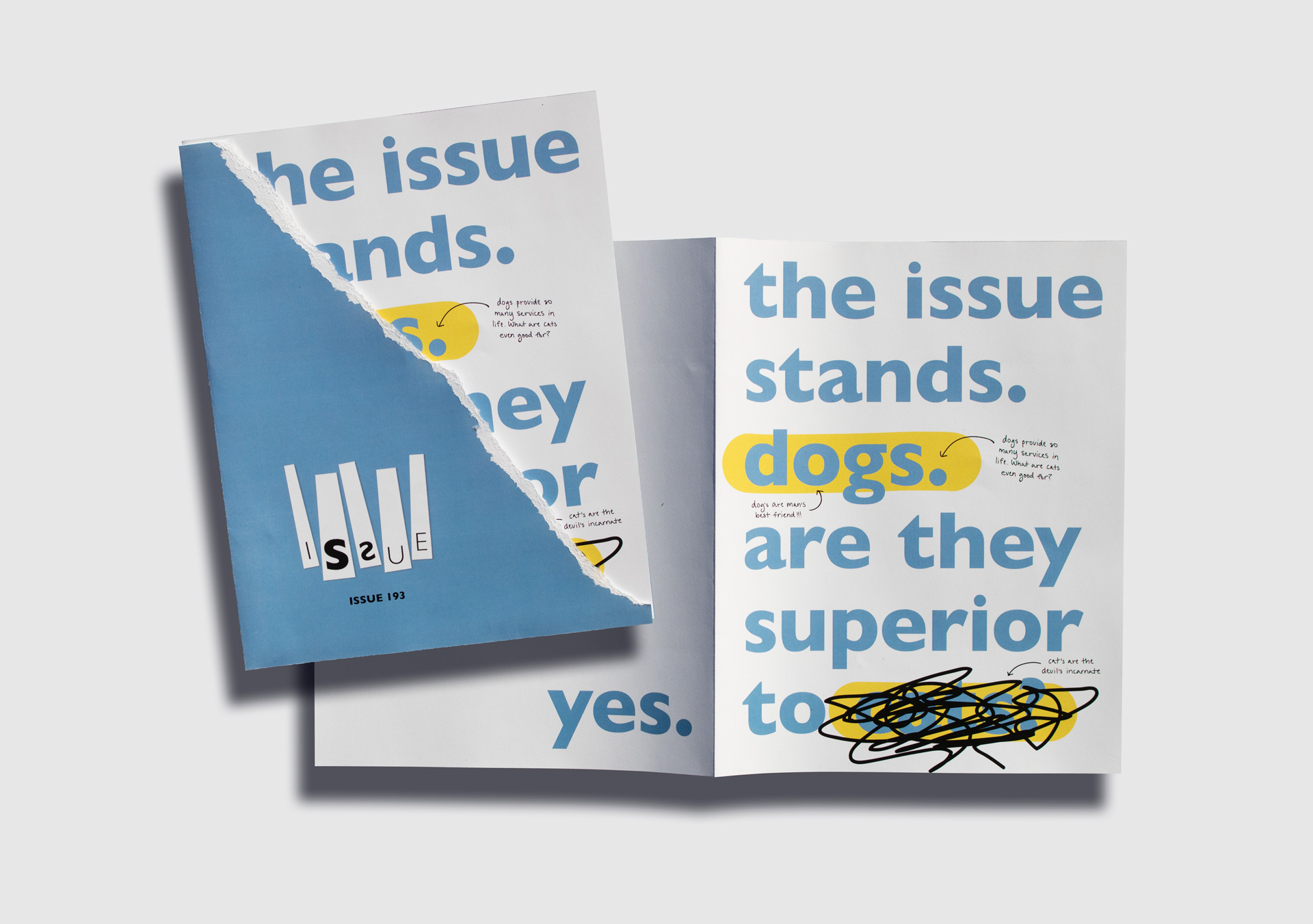





Fall 2018
publication
Conceptualize and design a system for a text dominant publication and test the system using a variety of content.
Issue is a user-generated publication that addresses a different nonsensical, controversial issue every issue. For this specific issue, I chose to look at the question, “Is a hamburger a sandwich?”. The publication is composed entirely of people’s opinions and presents the two sides of the argument: #teamsandwich and #teamnotasandwich.

Mind map illustrating the thought process behind my publication concept (composed from pieces of my notes and sketchbook pages).
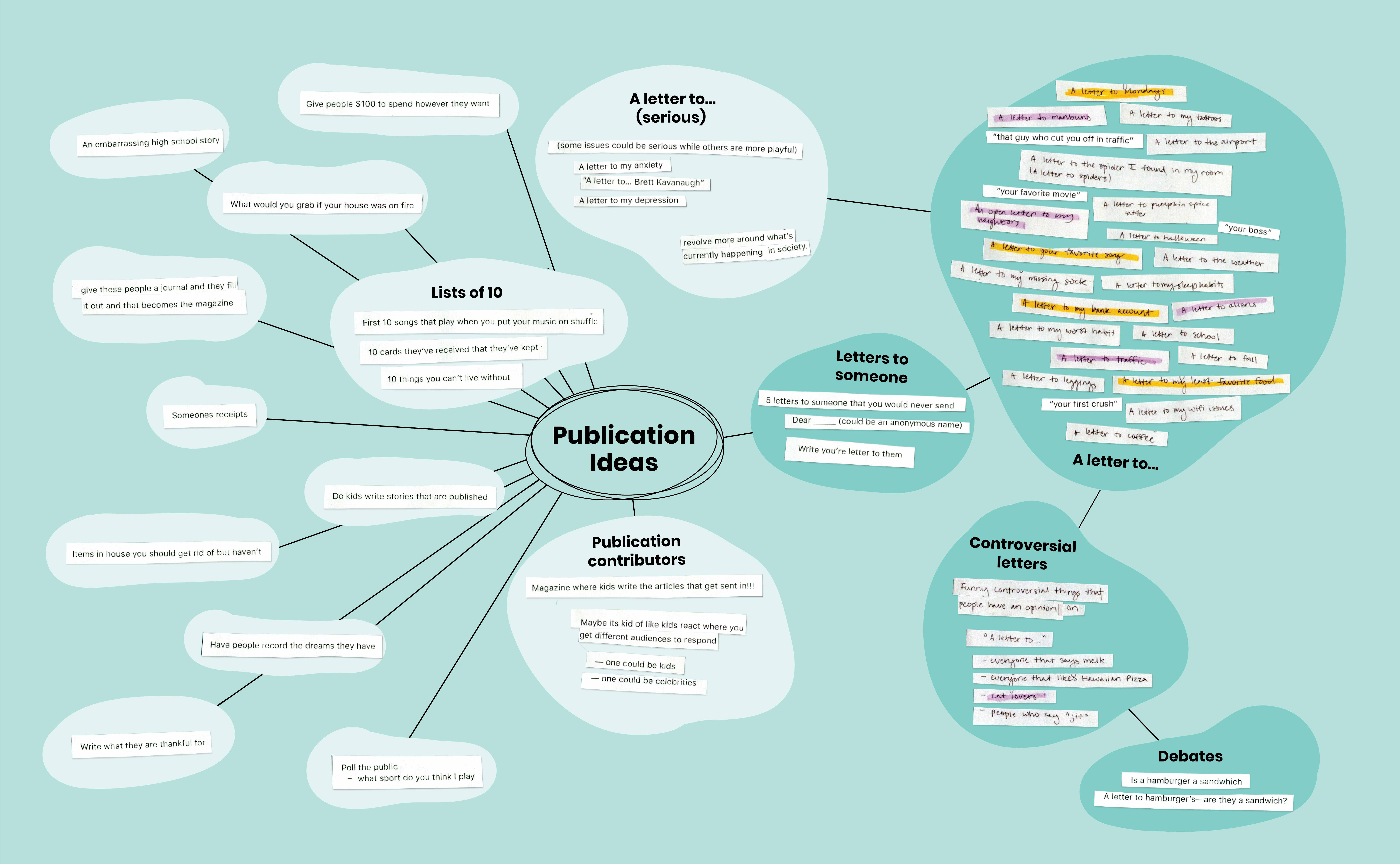
After deciding on the topic, “Is a hamburger a sandwich?,” I needed to start polling the people. To do so, I created a series of polls and began posting them across Facebook, Instagram, Slack, and my own residence hall.
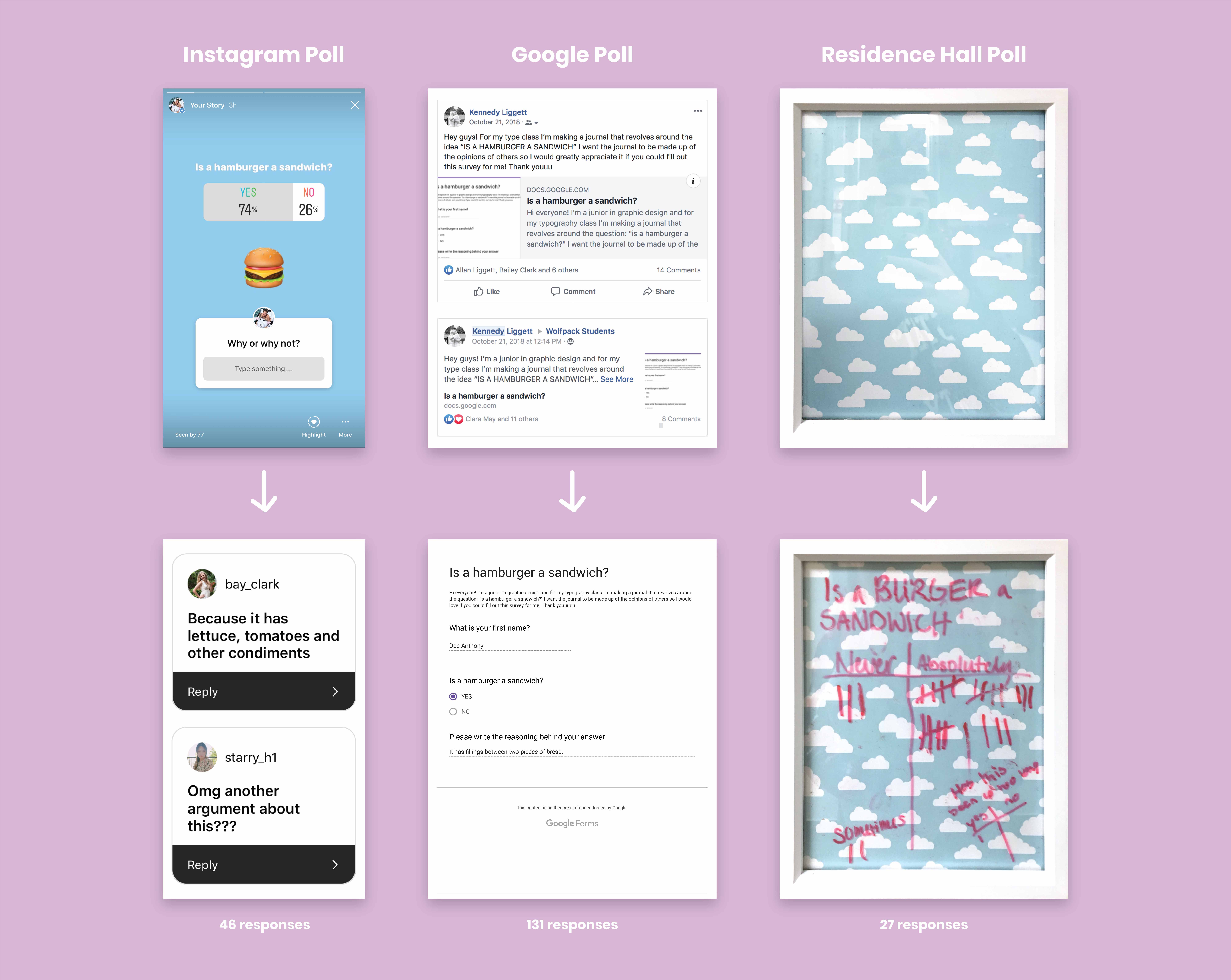
To compliment the opinions I was gathering, I dug through articles, podcasts, forums, blogs, tweets, and Youtube videos to see what was already being said about my topic. I then compiled my findings with my polls responses and broke each team’s argument into main points. (Blue represents #teamsandwich, red represents #teamnotasandwich, purple is neutral)

I started by playing with the letters in “Issue,” creating variations between them to represent the varying opinions in the publication. I also played on the representation of two teams by flipping one of the Ss in “Issue” to make it look like the Ss were facing off.



I began working on the interior of Issue by creating text-only thumbnails, playing with the placement of the arguments along with in-between elements. I then created sketches of my thumbnails, which I continually revised throughout my process.
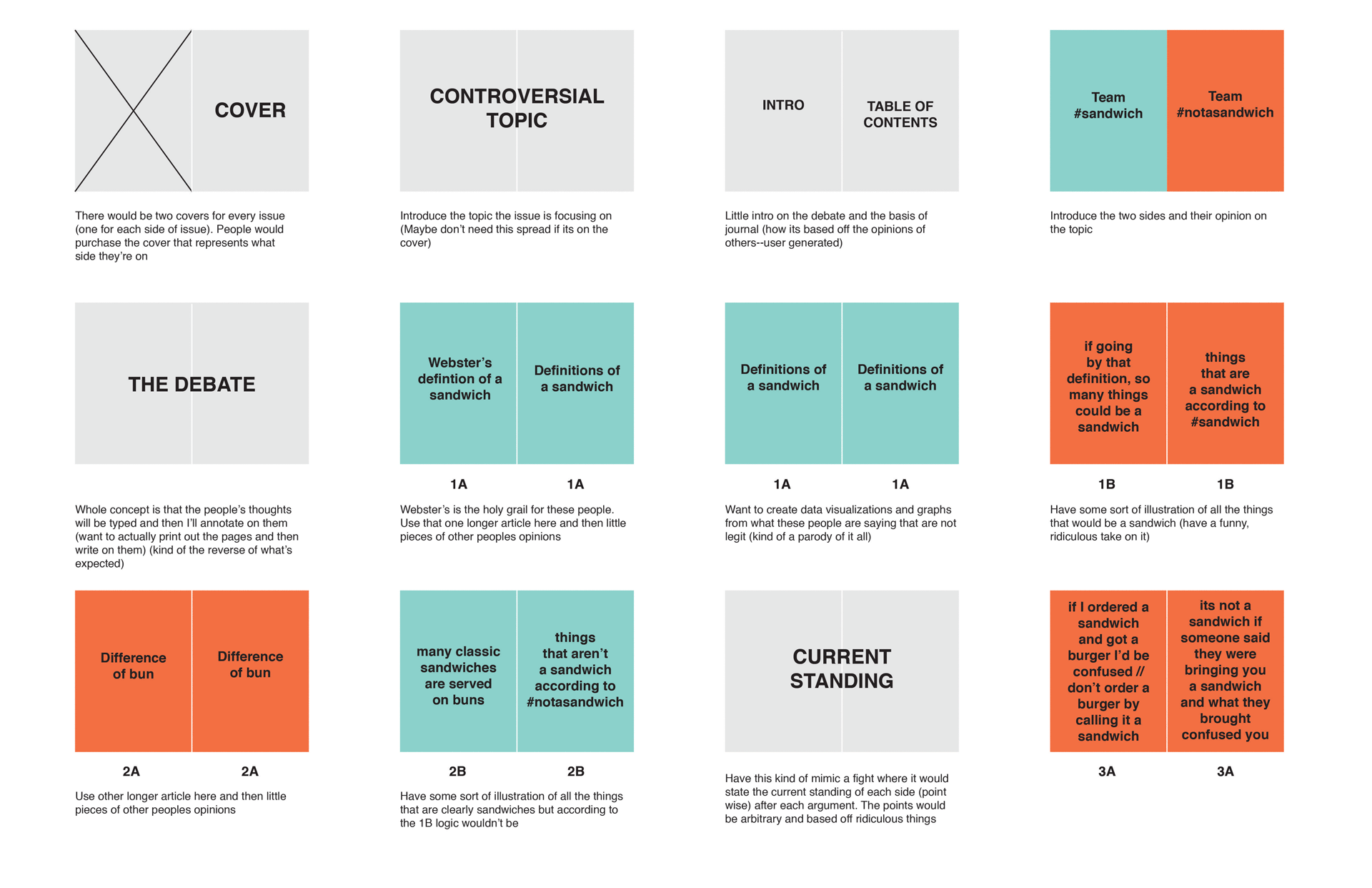

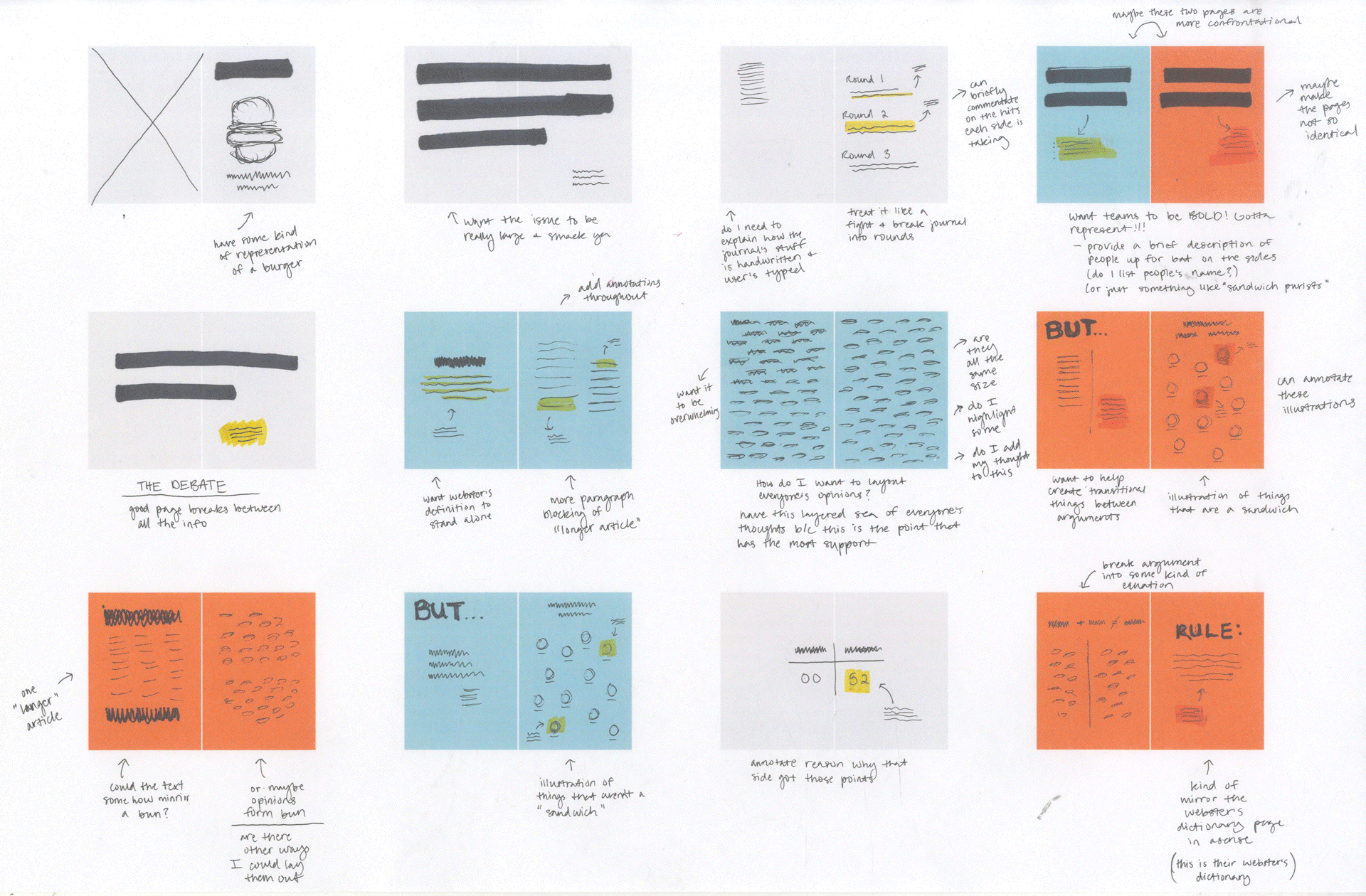

The publication has a sleeve, which is torn in half, to encapsulate the tension between the two teams going head to head. The publication also has a different cover for each team, allowing people to buy the magazine with the cover of the team they associate with. This creates opportunities for people to see what team others are on based on which magazine they buy. It also allows the publication to tally how many people associate with each team based on how many magazines of each cover are bought.
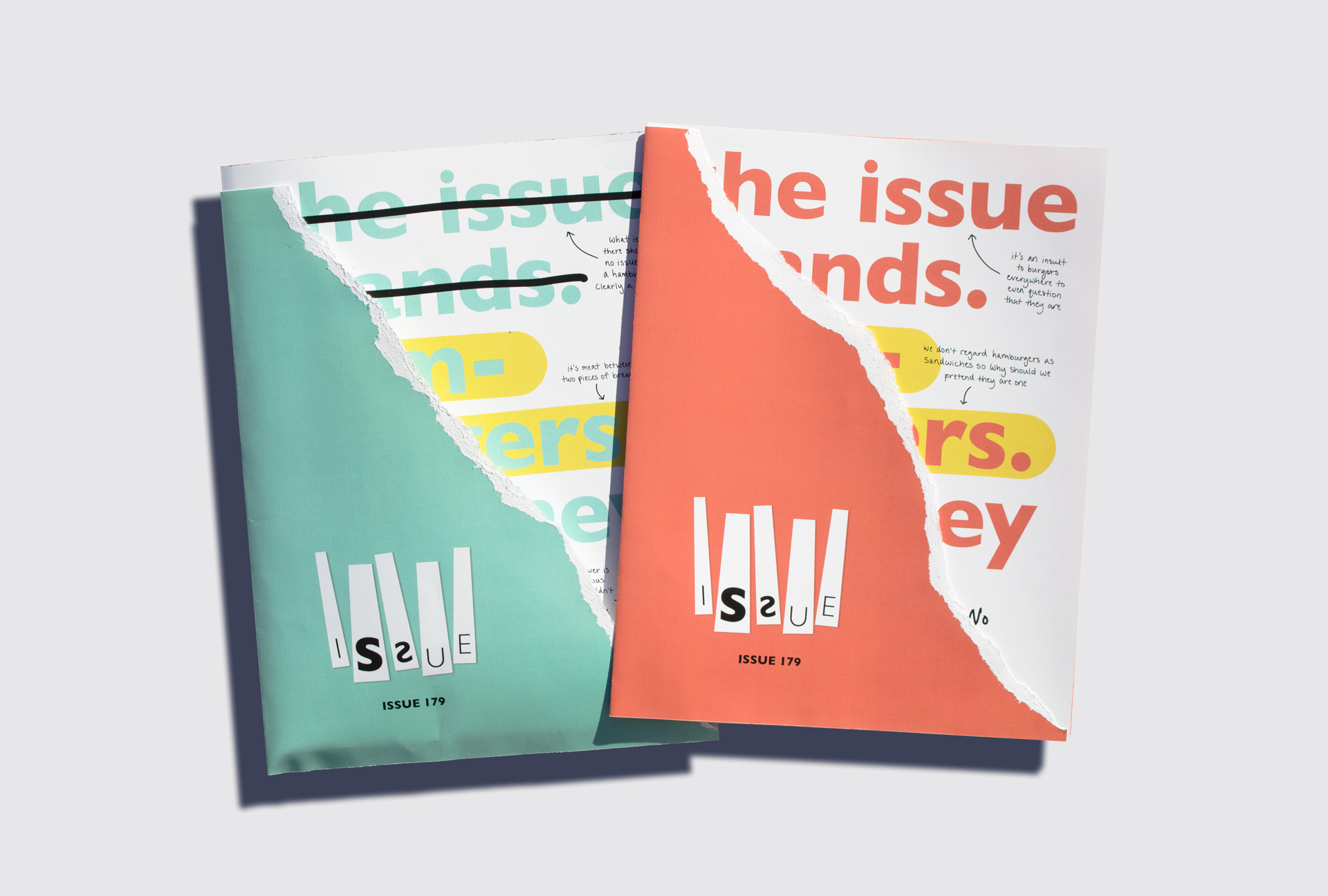
The question, “Is a hamburger a sandwich?” is written on the cover so people know what issue is being debated. The cover also appears to be annotated by each team, giving people a hint of the arguments inside. The two covers are annotated differently based on which team the cover represents.

The publication starts by introducing the two teams (#teamsandwich and #teamnotasandwich), along with the colors used throughout the publication to represent each team.



I began the debate with the argument I felt was at the center of the entire hamburger/sandwich debacle: Webster’s Dictionary’s definition of a sandwich. I wanted to reference Webster’s definition throughout the publication, building upon it as each argument progressed. Throughout the debate, the definition gets messier and messier as each team annotates and revises it.


To play into the satirical nature of my journal, I wanted to illustrate people’s opinions through charts and diagrams to make them seem more valid and logical than they really were.




Someone claimed “hamburger” buns were labeled as “sandwich” buns on their packaging, so I went to Target’s website to find out. I searched for “buns” and scrolled through the results, noting how each bun was labeled.

After each round of arguments, there’s a spread summarizing where each team stands. However, each team’s standing is dependent on arbitrary points awarded for arbitrary reasons.


Someone claimed hamburgers were listed under sandwiches on restaurant menus, so I researched the menus of seven popular franchise restaurants and noted how hamburgers were categorized on their menus.













Along with this issue, I wanted to show how other issues could be represented, as well as different controversial issues the publication could cover. Every issue would be similar color-wise with some shade of blue representing the affirmative side, and some shade of red representing the negative.
